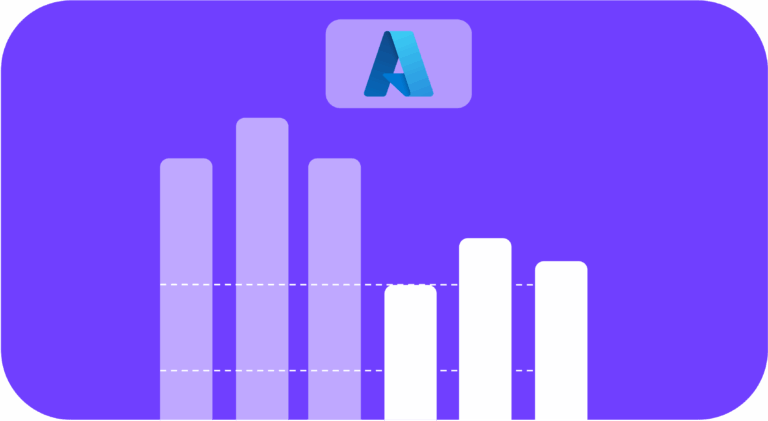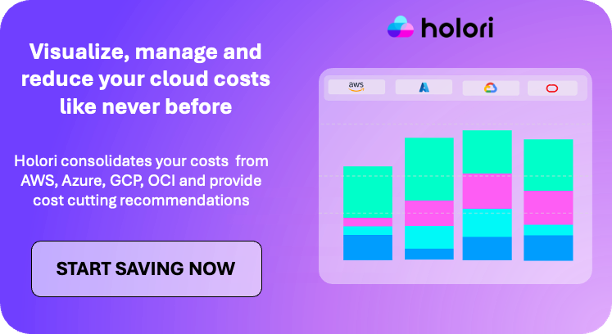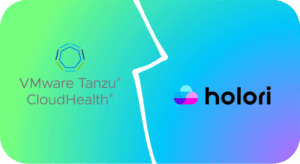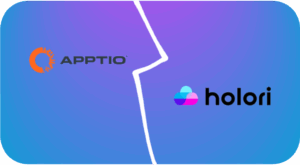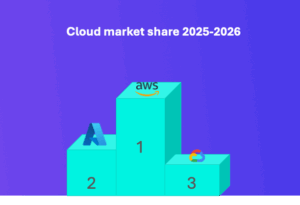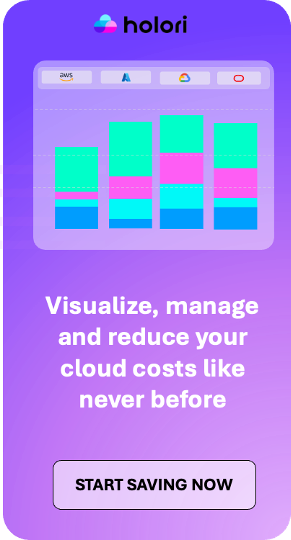In 2024, Microsoft Azure surpassed $75 billion in annual revenue, cementing its role as a top hyperscaler. As more companies move workloads to Azure, managing cloud costs becomes increasingly complex. Azure’s flexibility can lead to inefficiencies, unexpected bills, and unclear financial accountability across teams and regions.
While Azure offers basic cost tracking tools, they often lack the depth and centralization needed for larger organizations. Third-party FinOps platforms fill this gap by providing real-time insights, automated rightsizing, and budget forecasting across multiple clouds.
With extensive experience helping organizations optimize Azure spending, Holori has created this 2025 guide to the best Azure cost optimization tools, including our own platform. Whether you want to control costs or build a strong FinOps practice, this guide will help you find the right fit.
Why optimizing your Azure costs is essential
Optimizing Azure costs is crucial for managing cloud expenses efficiently without compromising performance or scalability. Effective cost management helps prevent sudden budget overruns caused by dynamic resource scaling and consumption-based billing. It also eliminates waste from unused or oversized resources, ensuring every dollar spent delivers real value. By giving technical teams clear visibility into spending patterns, organizations can make smarter architecture choices, while finance teams gain precise control over cost allocation. Ultimately, optimizing Azure costs ensures that your team benefits from the right infrastructure with no compromise on the capabilities and at the best possible cost.
Key Areas for Azure Cost Optimization
The FinOps Framework gives us strategic axes that apply for Azure as well as other providers.
Here are the four main pillars of a cost-optimized Azure infrastructure.
- Cost Visibility and Allocation
Gain full insight into your Azure spending by accurately attributing costs to teams or projects. Use consistent tagging and leverage Azure Budgets and Cost Management tools to monitor and share spending transparently. - Resource Optimization
Match resources to actual usage with right-sizing recommendations, auto-shutdown for non-production workloads, and moving infrequently used data to cheaper storage tiers. - Discount Management
Take advantage of Azure pricing options like Reserved Instances, Savings Plans, and Spot VMs to reduce costs on predictable or interruptible workloads. - Architecture Optimization
Save by adopting serverless computing, containerization, and hybrid licensing benefits. Organize resources effectively across subscriptions and management groups for better control and discounts.
Comparison of Native Azure Cost Tool vs Third-Party Tools
| Category | Native Azure Tool | Third-Party Tools (e.g., Holori) |
| Integration | Fully integrated into Azure Portal. No need for external setup | Requires connecting Azure account; usually a one-time setup with read-only permissions |
| Coverage | Azure services only | Wider scope: multi-cloud (Azure, AWS, GCP etc.), Kubernetes, and hybrid infrastructure |
| Cost to Use | Included with Azure subscription (via Azure Cost Management + Billing, Advisor, etc.) | Paid subscription; typically priced by cloud spend percentage or tiered model |
| Depth of Analysis | Basic usage metrics and cost-saving recommendations through Azure Advisor | Advanced analytics, AI-driven insights, forecasting, anomaly detection |
| Automation | Limited automation, manual actions suggested via Advisor and Cost Alerts | High automation for right-sizing, resource scheduling, commitment planning, cost allocation and policy enforcement |
| User Experience | Split across various Azure services and dashboards | Centralized, purpose-built UIs for FinOps, cost analysis, and optimization workflows |
| Support | Standard Microsoft support channels | Dedicated cost optimization experts and implementation guidance |
| FinOps coverage | Basic cost tracking, tagging, and budgeting | Full FinOps lifecycle support with cost allocation, performance tracking, and team reporting |
| Time-to-Value | Immediate access; benefits require familiarity with Azure billing models | Slight onboarding effort, but much faster ROI with expert-driven setup |
| Ideal For | Teams with moderate Azure spend or internal FinOps expertise | Organizations with multi-cloud, large environments, or FinOps maturity goals |
While Azure’s native tools provide foundational cost management capabilities, third-party tools offer enhanced features, especially for organizations operating in multi-cloud environments or requiring advanced analytics and automation.
Top 10 Azure Cost Optimization Tools in 2025
1. Holori: Next Generation FinOps Made Simple
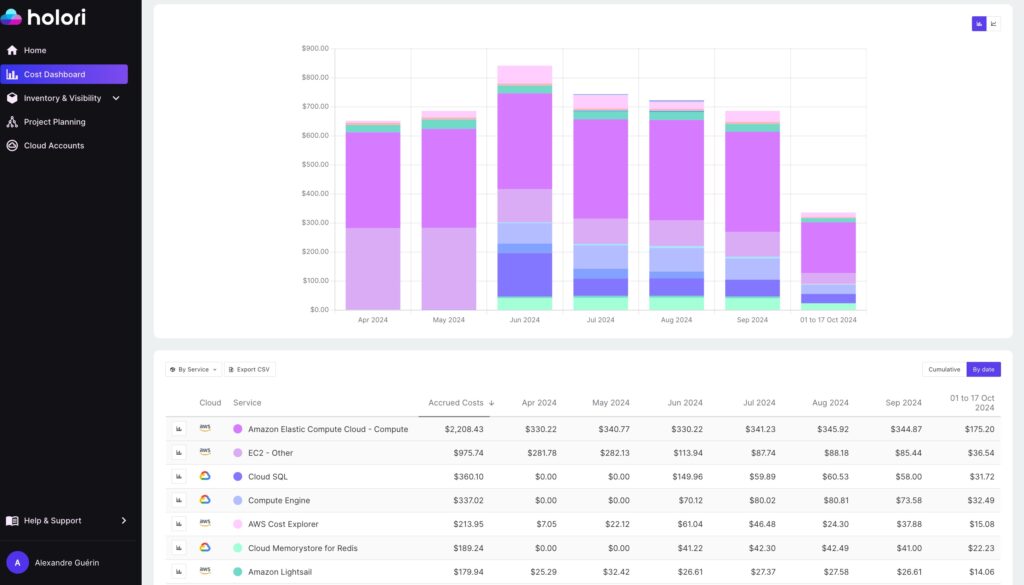
Holori is a next generation FinOps platform created to make cloud cost management effortless and effective. It brings all your cloud spending together in a single, easy to use dashboard. You get complete visibility across teams, projects and providers with powerful filters and virtual tags for precise analysis.
The platform automatically creates a visual map of your infrastructure so you can see every resource, track changes in real time and understand configurations instantly. Holori also provides clear recommendations to cut costs quickly by finding unused resources, suggesting commitment options and identifying rightsizing opportunities.
Holori works with leading cloud providers including Azure, AWS, Google Cloud, Oracle, Datadog and Scaleway. You can get started in less than five minutes from creating your account to viewing your first cost tracking dashboard.
Key Features
• Unified Multi Cloud Dashboard – Manage multiple providers in one intuitive interface
• Auto Generated Infrastructure Maps – Instantly visualize your cloud architecture
• Smart Optimization Tips – View multiple rightsizing options with estimated savings for each
• Commitment Planning – Access recommendations for savings plans, reserved instances and on demand instances
• Provider Agnostic Virtual Tags – Pinpoint costs with unmatched accuracy
- Allocate costs using a unique and intuitive visual representation of your organization’s structure.
Holori is ideal for any organization using more than one cloud provider that wants to optimize costs proactively and centrally without a complex setup.
2. Azure Cost Management: Microsoft’s Native Cloud Cost Monitoring and Optimization Tool
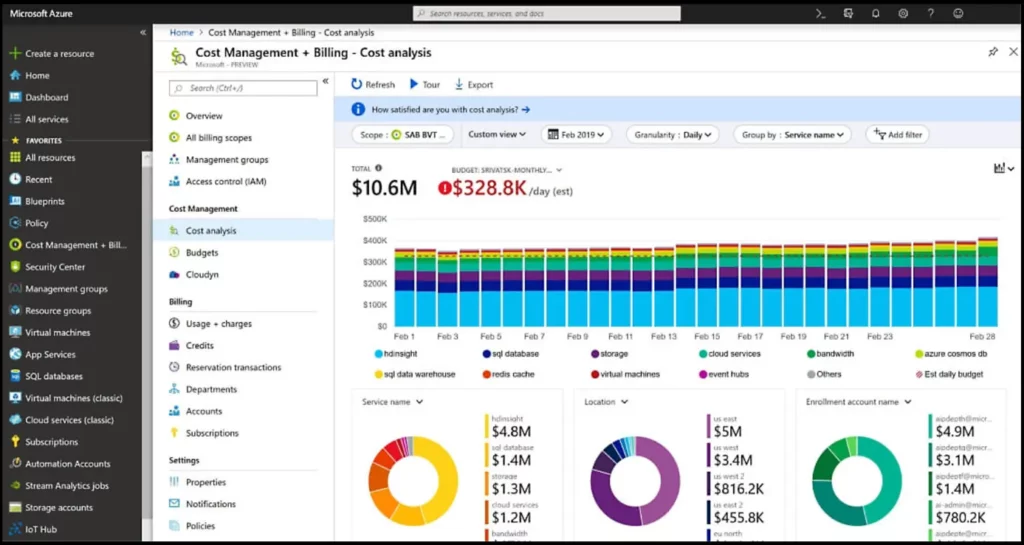
Azure Cost Management is a tool provided by Microsoft Azure to help users monitor, control, and optimize costs associated with their cloud services. It enables real-time expense tracking, trend analysis, and cost allocation by project, service, or team. The platform also offers recommendations to reduce spending such as removing unnecessary resources or leveraging reservations. With budget alerts and reporting features, it helps users stay within budget, maximize cloud resource efficiency, and plan future investments. However, customization options are limited and it is restricted to Azure environments.
Key Benefits
• Detailed Cost Visibility: Monitor real-time spending and resource usage within Azure, with detailed reports and cost visualizations at subscription, resource, or resource group levels
• Budgeting and Forecasting: Set budgets and receive alerts when spending exceeds limits to ensure proactive cost management and budget compliance
• Resource Optimization: Get recommendations to lower costs by eliminating underused resources or resizing virtual machines
• Integration with Microsoft Services: Easily integrates with tools like Azure Advisor and Azure Monitor to provide a comprehensive solution for cost management and performance within the Azure ecosystemConsiderations
• Limited to Azure: Does not support cost management for other cloud platforms
• No Automated Recommendations: Users must implement optimization suggestions manually
• Complex Interface: May be challenging for users unfamiliar with the Azure ecosystem
The best comprehensive Azure cost optimization tools
3. Apptio Cloudability: Enterprise Grade FinOps for Multi Cloud Environments
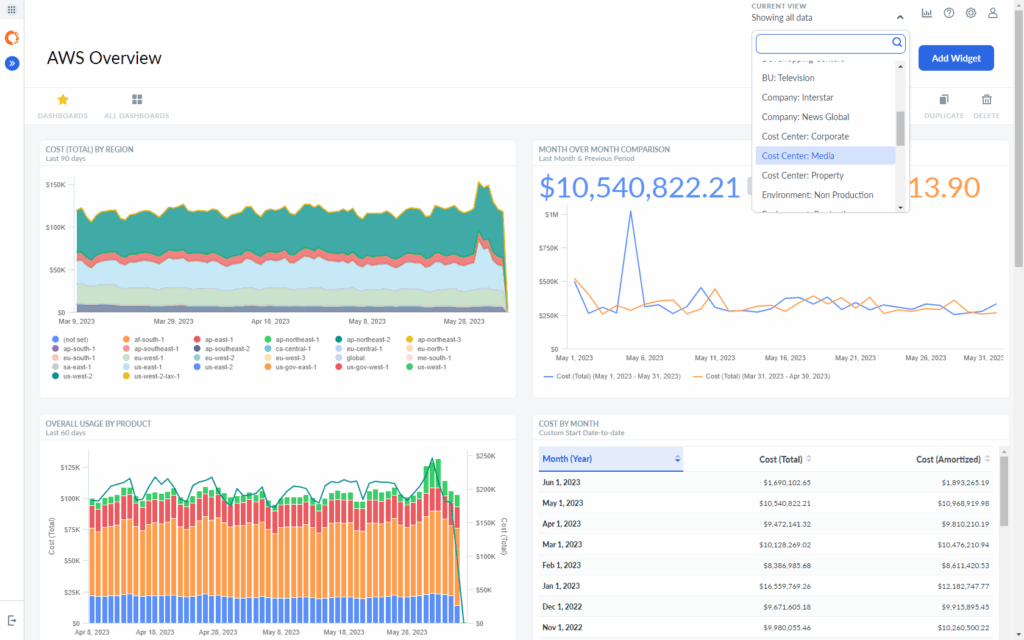
Cloudability is a leading FinOps platform built especially for large enterprises. With many years on the market, it is now part of Apptio and integrated into the IBM group. Cloudability is designed to give organizations a complete view of usage and costs across all services in a multi cloud environment. It provides optimization recommendations with a strong focus on rightsizing and estimates the return on investment for each recommendation.
The platform is highly customizable to meet the specific needs of each customer. This level of personalization can be complex and often requires professional guidance, which is typically an important part of the implementation process.
Key Features
• Custom Reports and Dashboards – Create interactive views to analyze costs by service, team or project
• Advanced Budgeting and Forecasting – Use historical data to predict future spending, stay within budget and plan cloud investments effectively
• Resource Optimization – Benefit from algorithm driven recommendations that identify unused or oversized resources and include ROI estimates for every suggestion
Best for very large organizations with multiple cloud providers that want centralized cost management combined with precise analytics and actionable optimization recommendations.
4. CloudCheckr: Comprehensive Cloud Cost Optimization, Governance, and Security
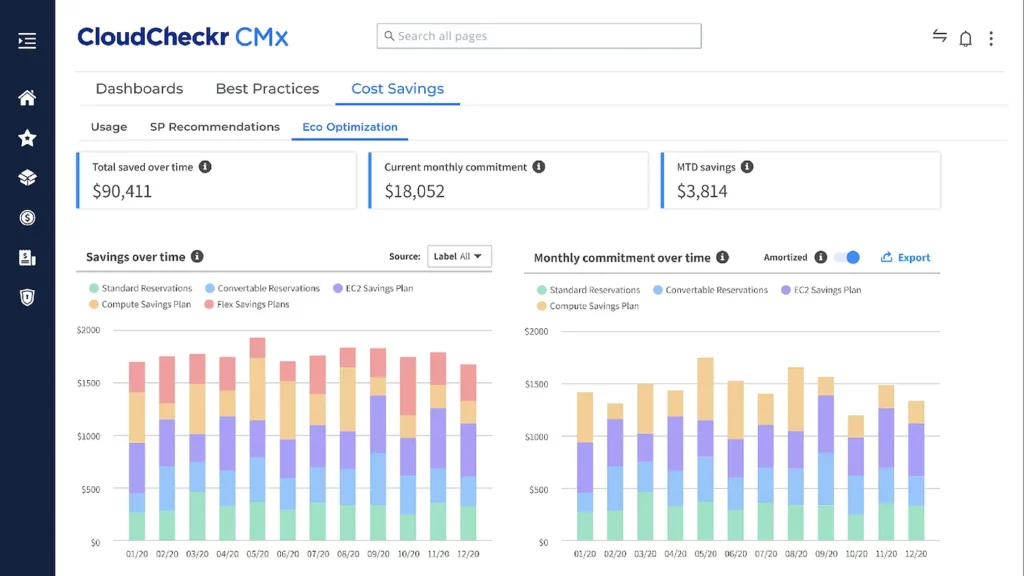
CloudCheckr, now part of NetApp’s Spot portfolio, delivers a comprehensive solution for cloud cost optimization, governance, and security. It supports Azure, AWS and Google Cloud, making it especially suited for organizations with complex multi cloud environments.
The platform provides detailed cost tracking and allocation by breaking down spending by team, project, or region. It also offers optimization recommendations such as identifying unused resources and suggesting reserved instances and savings plans to improve cost efficiency.
Beyond cost management, CloudCheckr strengthens governance with compliance monitoring and automated security checks. Although it offers many features, smaller teams may find the platform complex and overwhelming.
Key Features
• Cost Optimization – Identifies unused resources, recommends reserved instances and savings plans, and provides detailed cost allocation by team, project, or region
• Governance and Compliance – Ensures regulatory compliance including GDPR and HIPAA through automated monitoring
• Security Analysis – Delivers proactive security checks and alerts to protect your cloud infrastructure
Considerations: The setup process can be challenging for smaller organizations.
5. CloudBolt: Simplified Multi Cloud and Hybrid Cloud Management
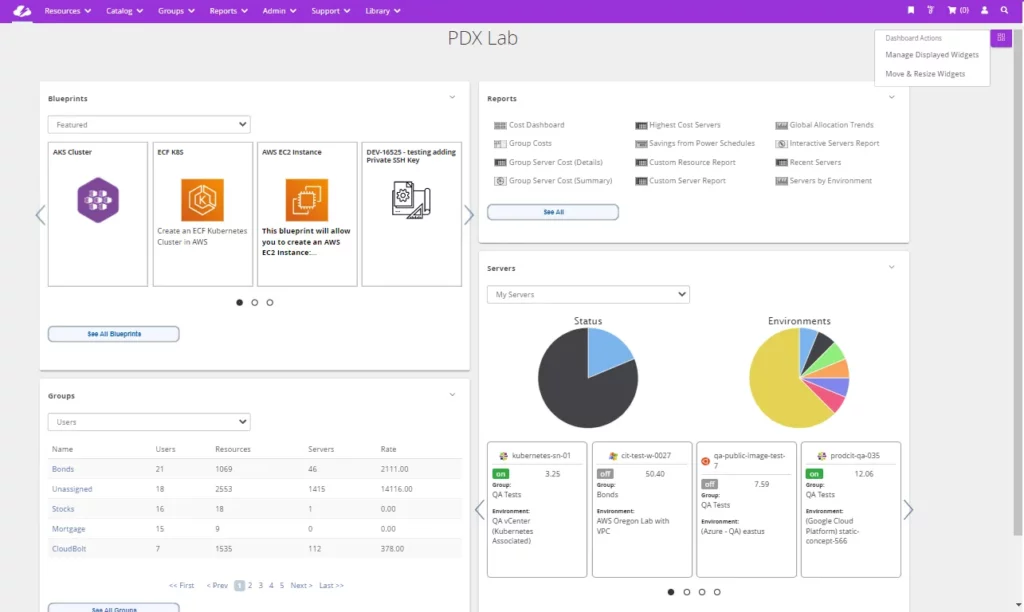
CloudBolt streamlines the management of multi cloud and hybrid cloud environments by unifying resources, automating workflows, and enabling cost efficient operations. It integrates seamlessly with leading providers such as Azure, Google Cloud and AWS as well as with private cloud environments.
The platform offers a centralized dashboard that consolidates costs and gives organizations clear visibility into their cloud spending. CloudBolt also supports governance by tracking usage patterns and optimizing resources. Automation features simplify provisioning and scaling to save time and reduce costs.
While the user interface is user friendly, CloudBolt is particularly well suited for medium to large organizations focused on managing complex environments.
Key Features
• Centralized Cloud Management – Combines multi cloud and hybrid environments into one dashboard for easier cost and governance tracking
• Automation – Streamlines workflows, provisioning, and scaling to reduce manual work and improve efficiency
• Usage Analytics – Tracks usage patterns to optimize resources and forecast future demand
Considerations Setup is not immediate and menus and options may initially be difficult to navigate.
6. Finout: Developer-Friendly Cloud Cost Management with Scalable Pricing
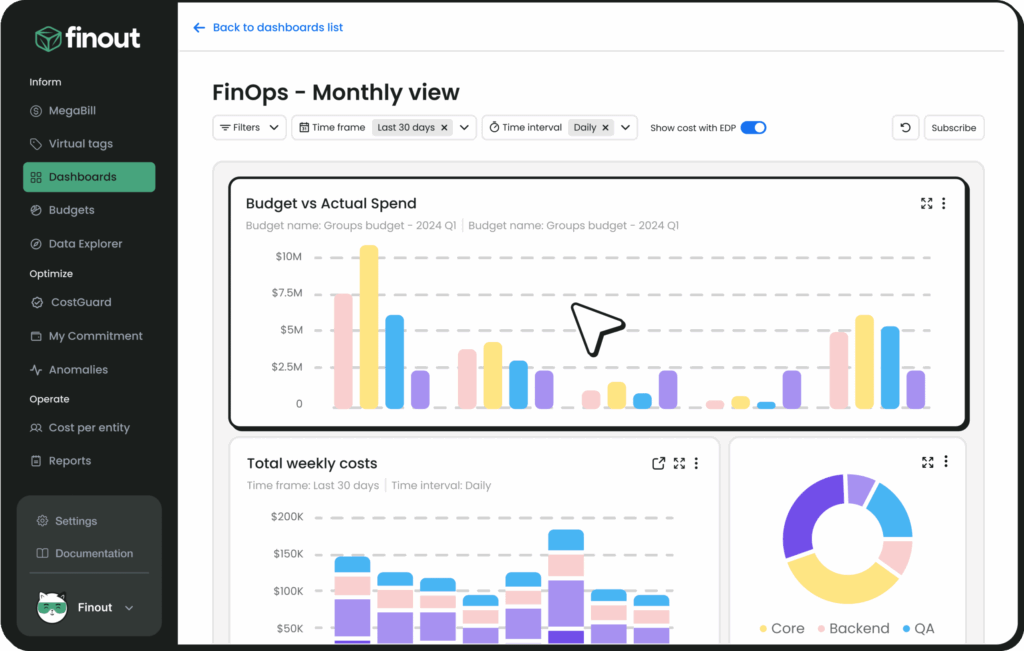
Finout provides a cloud cost management platform designed for engineering teams. Its intuitive interface makes complex billing data from Azure, GCP, and AWS easy to understand and act on. Finout offers custom cost reporting dashboards and automated anomaly detection that alerts teams about unexpected spending before it becomes a problem.
With native Kubernetes cost visibility and multi-cloud support, Finout stands out with a usage-based pricing model that avoids percentage fees, keeping costs predictable as spending grows.
While it lacks some advanced automation features of enterprise tools, Finout delivers excellent value to startups and growth-stage companies seeking simple, transparent cost management with minimal setup.
Key Features
• Custom Cost Reporting – Tailor dashboards to track spending by team, project, or service
• Automated Anomaly Detection – Alerts for unexpected spending patterns
• Multi-Cloud and Kubernetes Support – Visibility across AWS, Google Cloud, Azure, and Kubernetes
• Scalable Usage-Based Pricing – No percentage fees that increase with cloud costs
Best for engineering teams and startups looking for straightforward, transparent cost management with predictable pricing.
7. CloudZero: Cost Intelligence Platform Designed for Engineering Teams
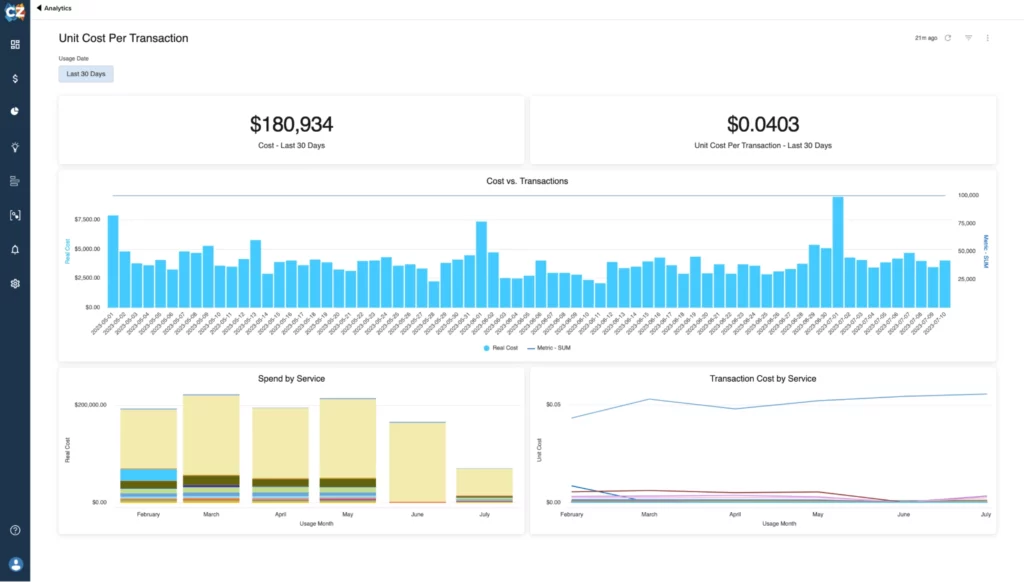
CloudZero is a cloud cost intelligence platform built to give engineering teams real-time visibility into their cloud spending. The platform organizes costs by product, feature, customer, or team, helping companies connect cloud expenses directly to business outcomes.
CloudZero provides automated cost allocation and anomaly detection to identify unexpected changes in spending quickly. It integrates seamlessly with Azure and offers advanced analytics to help teams optimize costs without sacrificing performance or innovation.
Key Features
• Cost Allocation by Business Metrics: Track cloud costs by product, feature, or customer to align spending with business goals
• Real Time Anomaly Detection: Receive alerts about unusual spending patterns to address issues promptly
• AWS Native Integration: Deep integration with AWS services for accurate and timely data
• Advanced Analytics and Reporting: Gain actionable insights to optimize cloud usage and expenses
Best for engineering and product teams looking for detailed cost insights tied to business metrics, especially within Azure environments.
8. Flexera One: Comprehensive FinOps Platform for Large Hybrid Multi-Cloud Environments
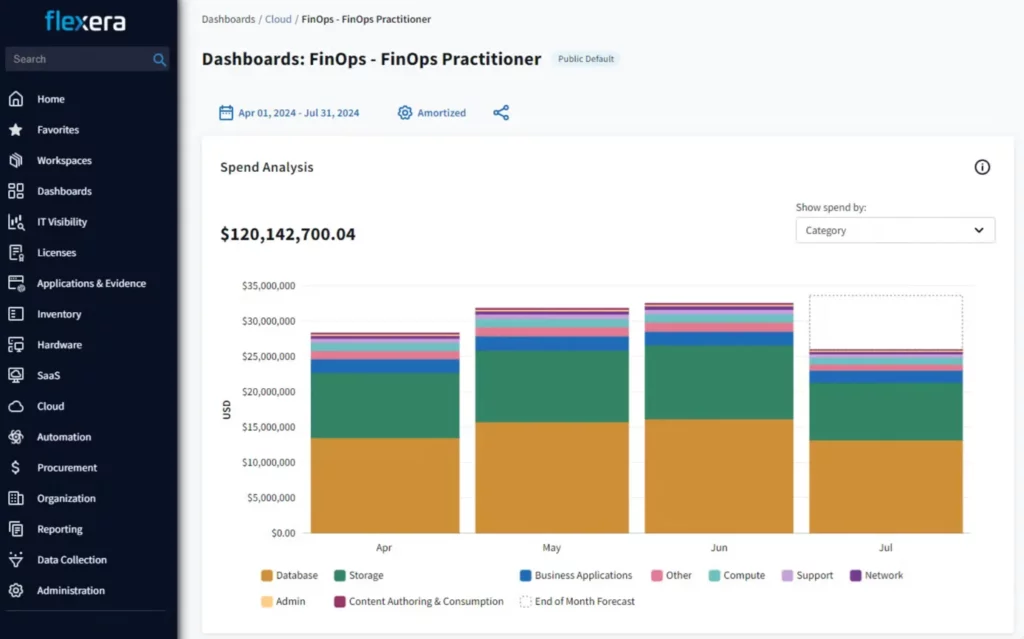
Flexera One is a leading FinOps platform designed specifically for large enterprises managing hybrid multi-cloud and on-premise environments. Its strength lies in robust cost optimization features and advanced analytics.
The platform offers detailed visibility into cloud usage and costs by integrating data from multiple providers to provide a unified view. Flexera One delivers actionable insights on oversized resources, unused workloads, and opportunities to purchase Reserved Instances. Additionally, its budgeting and forecasting capabilities help companies align spending with future growth plans.
However, the platform’s broad scope and cost may not be suitable for smaller organizations.
Key Features
• Comprehensive Visibility: Unified cost tracking across multi-cloud and on-premise environments for better decision making
• Cost Optimization: Insights into oversized and unused workloads with recommendations for acquiring Reserved Instances
• Advanced Budgeting and Forecasting: Align expenses with business goals using detailed financial modeling and forecasting tools
Considerations: The onboarding process is complex and often requires expert assistance.
Container and Kubernetes Cost Management
9. CAST AI: Intelligent Kubernetes Cost Optimization
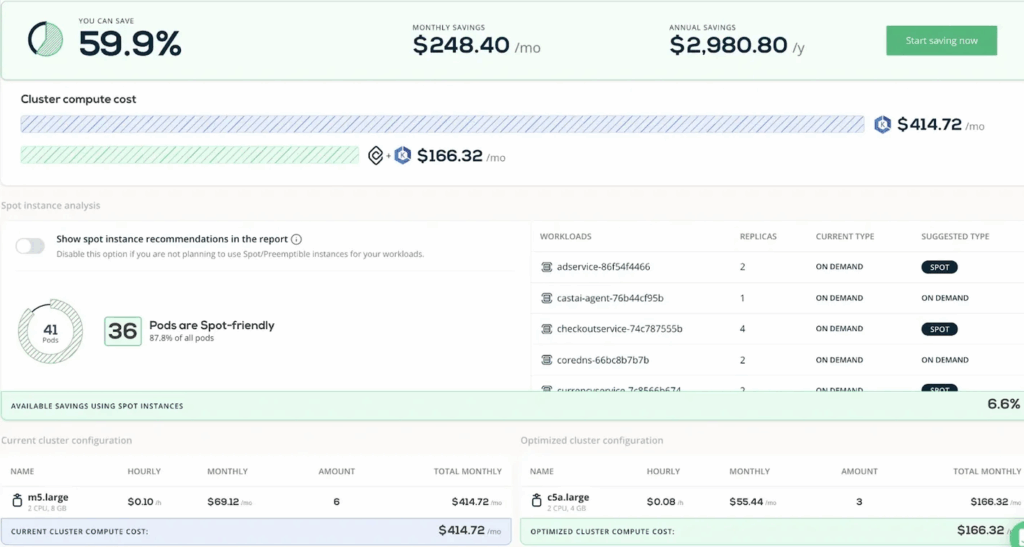
CAST AI is a solution specifically designed for Kubernetes environments. It helps businesses manage their clusters efficiently while reducing related costs. The main advantage is its automation module, which analyzes resource usage in real time and automatically adjusts clusters. For example, the tool identifies additional nodes that best fit the workload when needed and scales the infrastructure back down after a usage spike.
The goal is comprehensive optimization including rightsizing, autoscaling, use of spot instances, and decommissioning of unused resources.
Key Features
• Automatic Cluster Optimization – CAST AI adjusts Kubernetes clusters in real time to minimize costs caused by CPU and memory overprovisioning
• Cost Reporting – Allocates costs by project, cluster, module and more with a global multi cloud overview
• Multi Cloud Cost Comparison – For companies using multiple cloud providers, CAST AI offers recommendations for cost optimization and platform migration
• Node and Pod Management – Automates scaling and placement of pods to ensure optimal resource usage
Best for Kubernetes based infrastructures that require continuous and intelligent optimization to significantly reduce costs.
Note CAST AI is less suited for non containerized workloads. Its focus is mainly on compute instances and it does not cover other services such as storage extensively.
10. Kubecost: Kubernetes Focused Cost Management with Real Time Multi Cloud Visibility
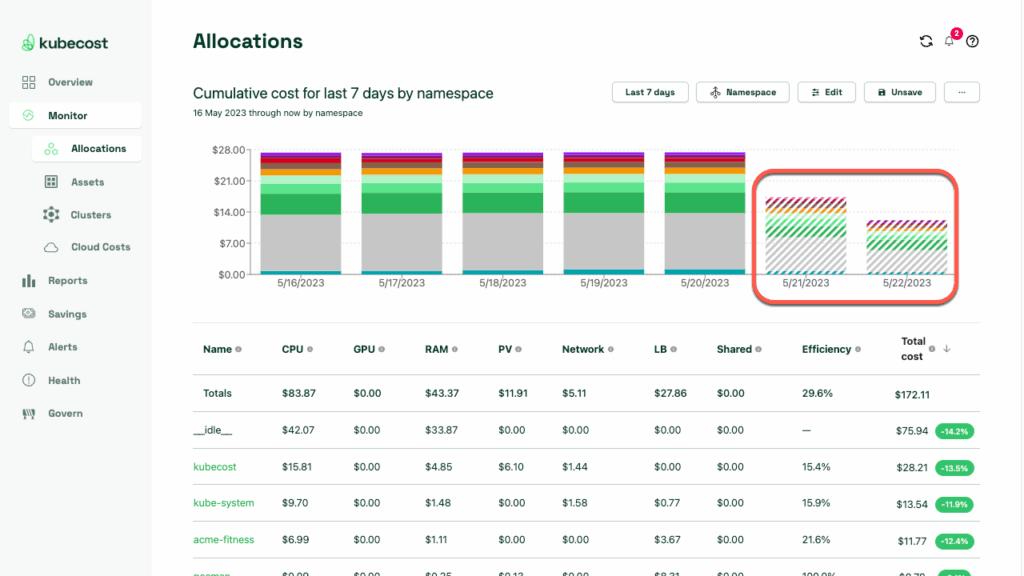
Kubecost, recently acquired by IBM, is a cost management tool built specifically for Kubernetes clusters. It provides detailed cost allocation, monitoring, and alerting features along with customizable options. Users can break down costs by namespaces, deployments, services, and other metrics while covering the three leading cloud providers.
By delivering precise resource cost allocation, Kubecost makes it easier to create reports that distribute costs across teams, applications, projects, or departments. The tool also links internal resource costs in real time with external cloud service expenses such as RDS instances, BigQuery, or S3, offering a unified view across multi cloud environments.
Key Features
• Custom Cost Allocation: Break down costs by namespaces, deployments, services, and other specific environments
• Multi Cluster and Multi Cloud Management: Manage multiple clusters and clouds via a single interface or API
• Integration of Internal and External Costs: Combine internal resource costs like CPU, memory, and storage with external cloud service expenses
• On Premises Deployment: Runs locally within your infrastructure to prevent sharing data externally, ideal for regulated industries
Considerations: Kubecost does not offer automated cost optimization. Recommendations must be implemented manually, which can be time consuming. The tool focuses solely on Kubernetes and should be paired with a separate FinOps platform for comprehensive cloud cost management.
Conclusion: Which is the best Azure cost optimization tool?
Choosing the right Azure cost optimization tool can make the difference between uncontrolled cloud expenses and strategic financial management. Whether you need deep visibility, automated right-sizing, or insights across multi-cloud environments, the tools covered in this guide offer powerful ways to reduce waste and improve efficiency. At Holori, we believe cost optimization should be an integral part of how organizations operate in Azure and not something that is done after the fact.
By implementing a comprehensive cost optimization strategy with the appropriate tools, organizations typically reduce their Azure spending by 25 to 40 % while maintaining or improving performance. These savings create valuable opportunities to reinvest in innovation, scale operations, and accelerate digital transformation.

